How to eliminate slugs and snails from the garden and the garden
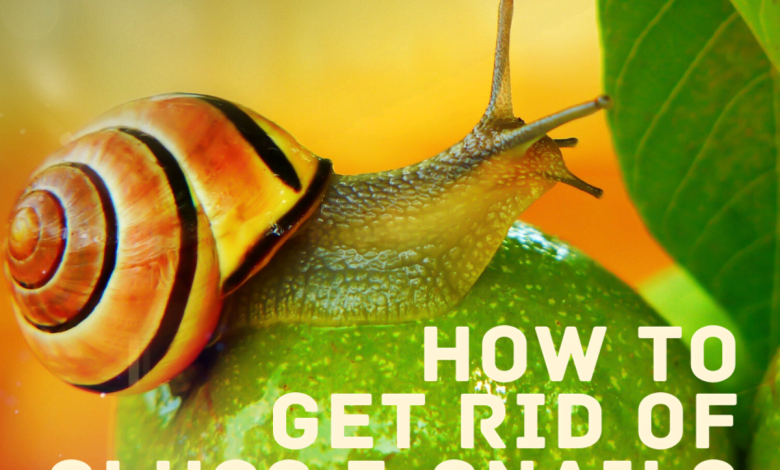
Slugs and snails are herbivorous molluscs that are harmless to
humans, but can become pests in the garden. They feed on plants by poking holes in leaves, and by eating
newly born plants and fruits that grow low to the ground, such as strawberries.
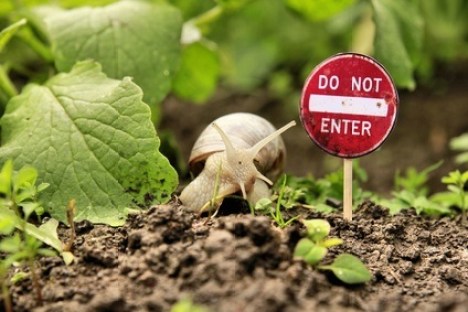
If they roam freely in the garden, slugs and snails can affect the leaves and fruits of almost all the plants in the garden, especially those with tender leaves such as chard, basil, spinach, lettuce, oregano… and become a very harmful plague for our vegetables if we do not manage to control them.
Slugs and snails are not usually a very serious problem unless there are too many of them, but if so, you should be careful with these mollusks because they can kill your harvest in a few hours.
How to identify a snail or slug infestation on plants
Slugs and snails are easy to identify as they are large and easy to see. They usually come out when the environment is hot and humid: at night, when it has just rained, after watering the garden, when the day is cloudy… If you have seen damage from holes in the leaves of the plants, pay attention to those moments so that you can identify the pest and kill as many as possible, this is when the most come out of their shelters and accumulate in the orchard.
Even so, if the environment is rather dry and they are sheltered, you can detect their presence if you see large leaves and numerous rounded holes (they are very voracious) and remains of the mucous or slime that they release.
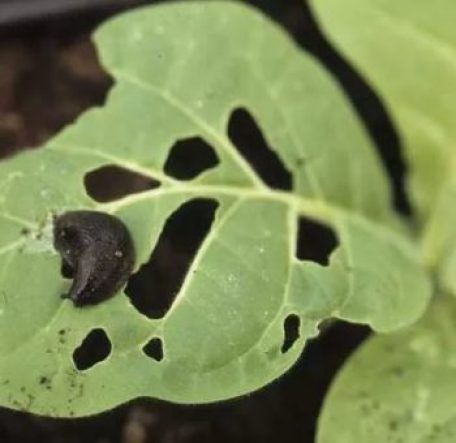
How to prevent an infestation of slugs and snails
As we have already seen in other articles in the « Pests and diseases » category, prevention is essential.
You can put plants in the garden that keep these mollusks away, such as nasturtium, mustard, thyme, ferns, sage or horsetail. Plant them between your crops or simply cut some branches and place them between them (for the horsetail the latter is better, because it can reproduce very quickly and invade the garden).
Another very effective method to prevent these molluscs from getting close to your crops is ash: create barriers with ash around the garden or leafy vegetables such as lettuce (the ones that snails like the most). With the same objective as the ash, you can also place a strip of sand or crushed eggshell about 5-10 cm around the garden. If it rains or there is a lot of wind, replace the strip.
How to eliminate snails and slugs with ecological methods
After manually removing all the mollusks you can or sprinkling them with salt (so they die) you can combine several of the following methods to kill the entire population of snails and slugs in your garden:
Shelters – snail trap
You can place pieces of leaves that the snails like under tiles or other objects, such as wooden slats, that provide shade. The mollusks will take refuge down there and that’s when you can take advantage of it to eliminate several at once.
natural enemies
Predators of slugs and snails are toads, hedgehogs, lizards, blind worms or centipedes, which feed on their eggs. You can capture them or buy them at a specialized biological control store and release them near where the individuals you want to eliminate are.
If stones or tiles are placed, these animals will take refuge in them and it will be easier for them to continue living in your garden feeding on the pest.
Ash barriers for snails
Wood ash and diatomaceous earth (both sold at nurseries or garden stores) are sprayed on and around plants attacked by snails and slugs, and since it is very annoying for them to move on them, they will go away. Keep in mind that if it rains this method will lose its effectiveness, so you will have to renew the barriers.
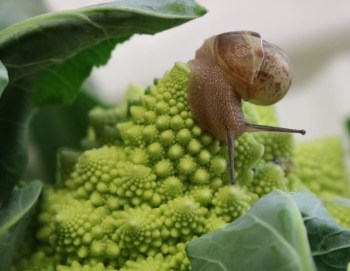
Snail and slug traps
Use a plastic or glass container -the size of a glass- and bury it near the plants preferred by snails (place it buried in a hole but protrude a few millimeters from the ground so that irrigation water does not enter).
Fill the glass with beer and you will see how in a couple of nights you have a few snails and slugs drowned in it. This is because they are attracted to the beer and, when they reach the glass, they slip down its walls and fall inside without being able to get out. You should remove the dead snails every one or two days.
shellfish smoothie
It may sound pretty gross to you, but I’ve heard that this can be an effective method: if you stir up the mixture of dead slugs and beer, and pour it around the plants that have been attacked, the ones left alive will quickly go away.
Another way is to let the mixture stand and stir for a few days and add nettle branches. Then filter it and spray the plants and the soil with it. In addition to scaring away these animals and slugs, this mixture is a good fertilizer.
Poison for slugs and snails: ferramol
If the attack in your garden is very severe, and you think that if you don’t act quickly and very effectively you could lose most of the harvest, you can also use this bait for slugs and snails: ferramol.
Ferramol comes from materials that are naturally present in nature (active material: ferric phosphate), which is why its use in Organic Farming is authorized.
References
- Ministry of Agriculture, Fisheries and Food, 2006. Resolution of the General Directorate of Health of Agricultural Production for the authorization of Ferramol Antilimacos. General Secretariat of Agriculture and Food. General Directorate of Health of Agricultural Production.
- Matamoros Torres, M., 2011. Agroecological management of shellfish. Beneficial Arthropod Breeding Laboratory. INISAV.
- University of California, 2014. Integrated Pest Management: Slugs and Snails. IPM brochure included in the California Childcare Health Program, University of California (San Francisco, USA).

![Photo of Subtropical Climate: [Characteristics, Flora, Fauna and Adaptability]](https://www.complete-gardening.com/wp-content/uploads/2022/08/subtropical-climate-characteristics-flora-fauna-and-adaptability-390x220.jpg)
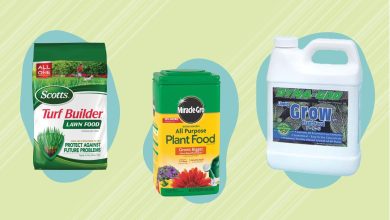
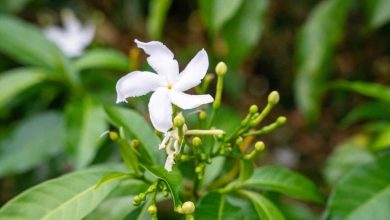
![Photo of Potato Virus: [Characteristics, Detection, Effects and Treatment]](https://www.complete-gardening.com/wp-content/uploads/2022/08/potato-virus-characteristics-detection-effects-and-treatment-390x220.jpg)